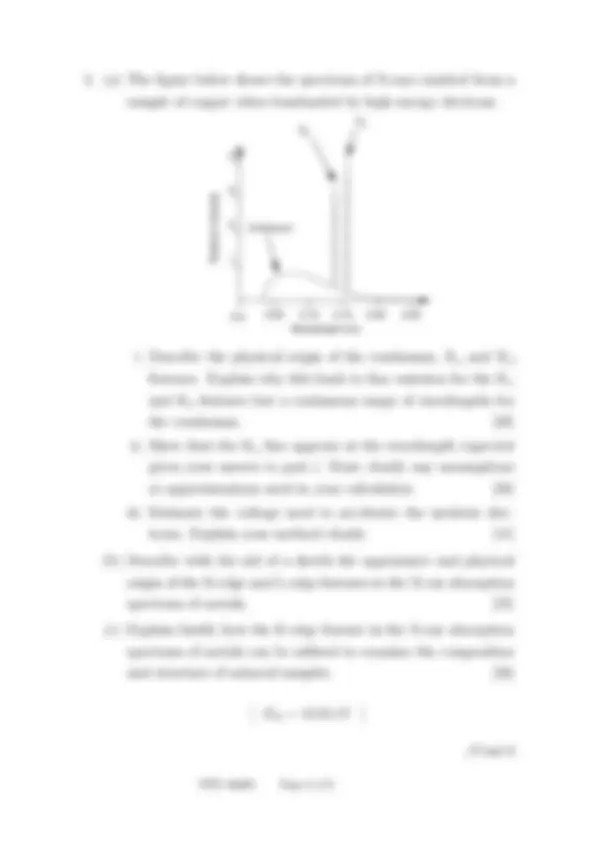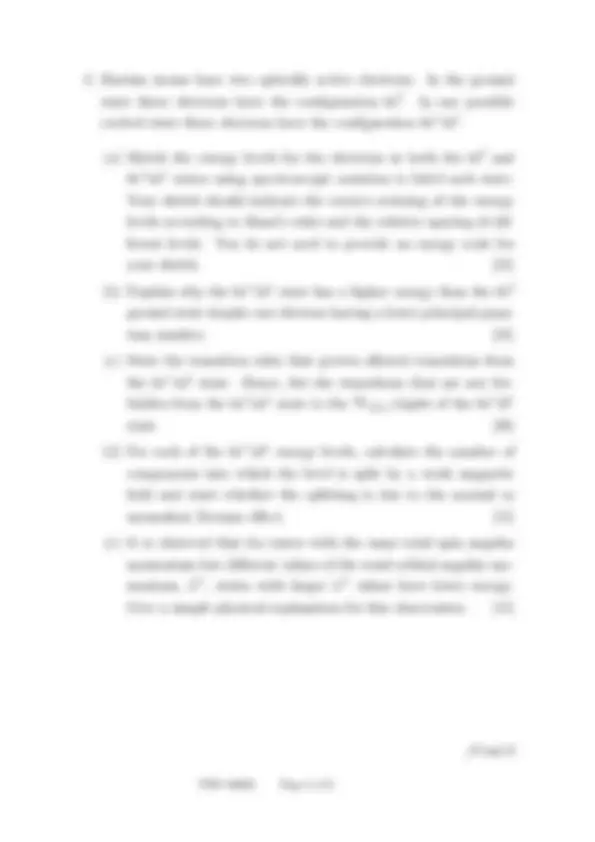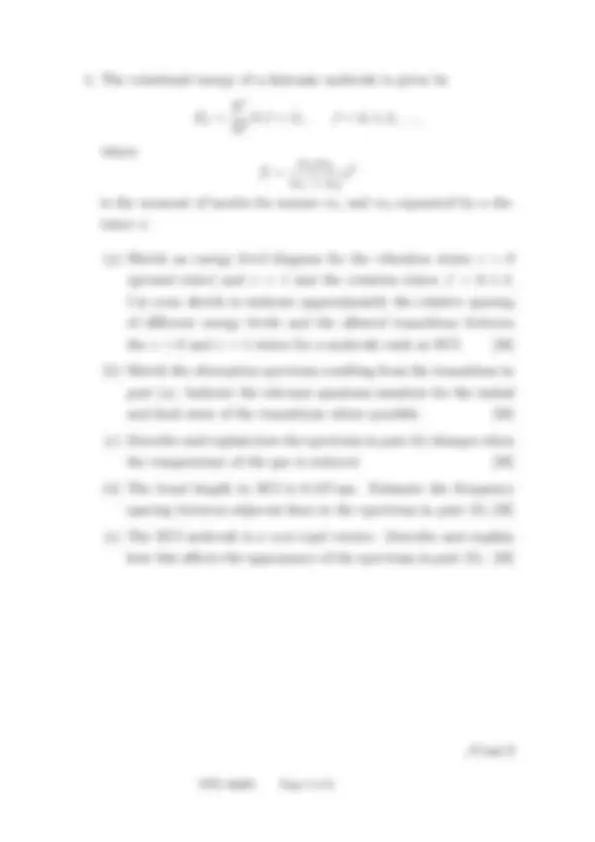





Study with the several resources on Docsity

Earn points by helping other students or get them with a premium plan


Prepare for your exams
Study with the several resources on Docsity

Earn points to download
Earn points by helping other students or get them with a premium plan
Community
Ask the community for help and clear up your study doubts
Discover the best universities in your country according to Docsity users
Free resources
Download our free guides on studying techniques, anxiety management strategies, and thesis advice from Docsity tutors
The questions for an exam in quantum physics of atoms and molecules (phy-30009) at keele university, 2010/11. The exam covers topics such as particle in a ring potential, x-ray emission and absorption spectra, and energy levels of atoms. Candidates are required to answer three questions. Detailed instructions and calculations for each question.
Typology: Exams
Uploaded on 09/29/2011
1 / 6

This page cannot be seen from the preview
Don't miss anything!




Level III
Tuesday 10th^ May 2011, 16.00-18.
PHYSICS/ASTROPHYSICS
PHY-
QUANTUM PHYSICS OF ATOMS AND MOLECULES
Candidates should attempt to answer THREE questions.
ψ(θ) =
√√ √√ 1 2 π e
inθ
where n = 0, ± 1 , ± 2 ,... is any integer. The energies of the states are En = n
(^2) ¯h 2 2 mR^2. (a) At time t = 0 the particle has equal probability of being at all positions within one half of the ring. i. Show that the wavefunction at time t = 0 can be written as
Ψ(θ, 0) =
√^1 π 0 ≤^ θ < π 0 π ≤ θ < 2 π [20] ii. Calculate the probability of observing the particle in the ground state at time t > 0. [40] (b) State and explain the value of the degeneracy of the ground state and first excited state in the case of an electron confined to a ring. [20] (c) State and explain the boundary conditions that apply to the energy eigenfunctions in this case. [20]
/Cont’d
(a) Sketch the energy levels for the electrons in both the 6s^2 and 6s^1 5d^1 states using spectroscopic notation to label each state. Your sketch should indicate the correct ordering of the energy levels according to Hund’s rules and the relative spacing of dif- ferent levels. You do not need to provide an energy scale for your sketch. [25] (b) Explain why the 6s^1 5d^1 state has a higher energy than the 6s^2 ground state despite one electron having a lower principal quan- tum number. [25] (c) State the transition rules that govern allowed transitions from the 6s^1 5d^1 state. Hence, list the transitions that are not for- bidden from the 6s^1 5d^1 state to the 3 F 2 , 3 , 4 triplet of the 6s^1 5f^1 state [20] (d) For each of the 6s^1 5d^1 energy levels, calculate the number of components into which the level is split by a weak magnetic field and state whether the splitting is due to the normal or anomalous Zeeman effect. [15] (e) It is observed that for states with the same total spin angular momentum but different values of the total orbital angular mo- mentum, LT^ , states with larger LT^ values have lower energy. Give a simple physical explanation for this observation. [15]
/Cont’d
EJ = ¯h
2 2 I J(J^ + 1),^ J^ = 0,^1 ,^2 ,... , where I = (^) mm^1 m^2 1 +^ m 2
a^2 is the moment of inertia for masses m 1 and m 2 separated by a dis- tance a.
(a) Sketch an energy level diagram for the vibration states v = 0 (ground state) and v = 1 and the rotation states J = 0, 1 , 2. Use your sketch to indicate approximately the relative spacing of different energy levels and the allowed transitions between the v = 0 and v = 1 states for a molecule such as HCl. [20] (b) Sketch the absorption spectrum resulting from the transitions in part (a). Indicate the relevant quantum numbers for the initial and final state of the transitions where possible. [20] (c) Describe and explain how the spectrum in part (b) changes when the temperature of the gas is reduced. [20] (d) The bond length in HCl is 0.127 nm. Estimate the frequency spacing between adjacent lines in the spectrum in part (b).[20] (e) The HCl molecule is a non-rigid rotator. Describe and explain how this affects the appearance of the spectrum in part (b). [20]
/Cont’d